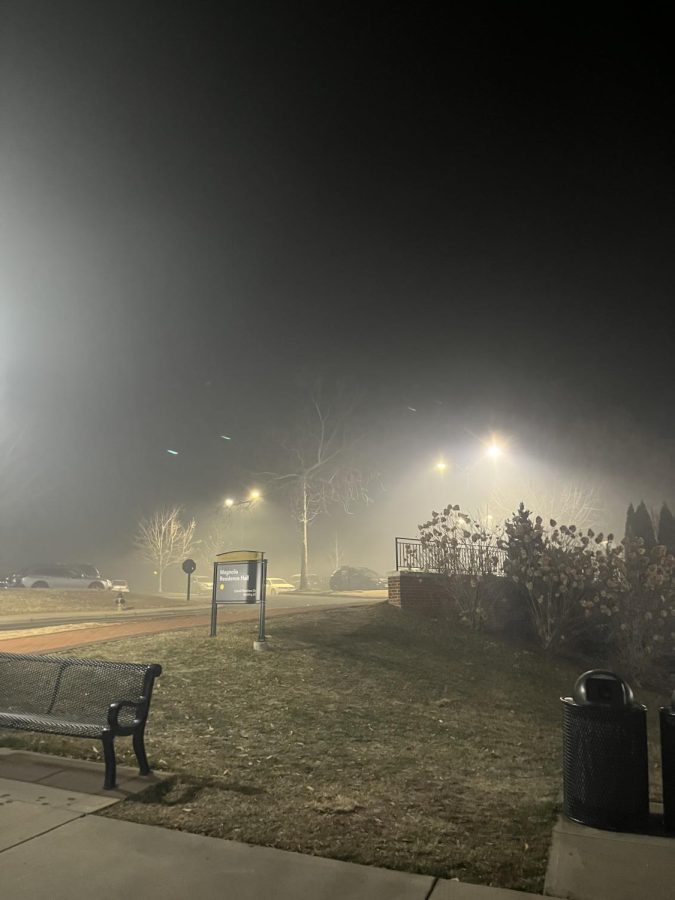The Weaver Fire and Wake Forest
February 1, 2023
At Wake Forest, the Weaver Fertilizer Plant fire opened the eyes of students and administrators to the realities many Winston-Salem residents have long understood about environmental racism and the necessity for environmental justice initiatives in Winston-Salem, according to Dr. Corey D. B. Walker, the Wake Forest professor of the humanities, founding director of the African American Studies program and interim dean of the School of Divinity. That increased awareness culminated in a $1 million grant from the Mellon Foundation for environmental justice efforts, which the university announced on Jan. 19.
Walker was the visionary behind the Mellon Grant. He, along with Director of the Environment Program Dr. Julie Velásquez Runk, is spearheading environmental justice initiatives at Wake Forest.
“What the Weaver fire did was allow us to be very exposed and very sensitive to the precariousness of individual lives in our society,” Walker said. “…in a broader society, we do have to be concerned about the lives and life chances of those who live a much more precarious existence [than ourselves].”
Walker explained that the goal of the Mellon grant is not for the university to serve the community directly but instead for the university to foster a more humane educational system.
“One reason why I wrote the Mellon grant is to begin to look very systemically at how we begin to educate students and scholars for a new generation while recognizing that the deep inequalities that we have and witness are not just by happenstance,” Walker said. “In many ways, the Weaver fire was not just a disaster that erupted out of nowhere, it was a disaster by design.”
When Walker says “disaster by design,” he is referring to Winston-Salem’s history of redlining and zoning along racial and economic lines, as well as the impacts of agribusiness on the fertilizer industry. Each of these factors are real-world examples that point to the necessity of pursuing environmental justice, which the Environmental Protection Agency (EPA) defines as “the fair treatment and meaningful involvement of all people regardless of race, color, national origin or income, with respect to the development, implementation and enforcement of environmental laws, regulations and policies.”
Moving forward, Wake Forest hopes to develop an environmental justice-focused curriculum within the Environment Program. Velásquez Runk was hired in August 2022 specifically to address this goal.
Velásquez Runk says her vision for the Environment Program as a new hire is to be community and justice-oriented, which is based on her belief that the environment and people are inseparable.
Velásquez Runk’s most recent change to the environment curriculum was introducing “The Intersectional Environmentalist” by Leah Thomas — a book that focuses on the linking systems of the environment, racism and privilege — as a required textbook for ENV 201: Introduction to Environmental Issues.
What the Weaver fire did was allow us to be very exposed and very sensitive to the precariousness of individual lives in our society.
— Dr. Corey D. B. Walker
“In the past, people have been separate from the [study of the] environment…” Velásquez Runk said. “I emphasize this to say that’s not the approach we want in the 21st century.”
Dr. Dean Franco is a professor of literature and director of the Humanities Institute at Wake Forest. He specializes in race studies and human rights and is the author of “The Border and the Line: Race, Literature, and Los Angeles,” which examines neighborhood segregation in Los Angeles, Calif.
Franco says that the definition of a neighbor is someone who is near, meaning that how we treat others often correlates to our awareness and proximity to them.
“When we’re near each other, we feel an obligation toward one another,” Franco said.
Franco says that environmental disasters, like the Weaver Fertilizer Plant fire, offered a wake-up call for many neighbors.
“The environment and environmental disasters have a way of showing where the borderlines of segregation are, because you’re like, ‘Oh, I’ve never seen that neighborhood before, but it’s right near me’” Franco said. “You see where those borderlines are, but the environmental disaster breaches those borderlines really quickly.”
He continued: “[Wake Forest has] been political neighbors to the neighborhoods around us for so long. We have gates and fences and ID cards…when you have an environmental disaster, you become an ethical neighbor. That’s when you realize we are all commonly exposed. We’re all similarly near this thing that’s happening. That’s why [the Weaver Fertilizer Plant fire] was a wake-up call.”
